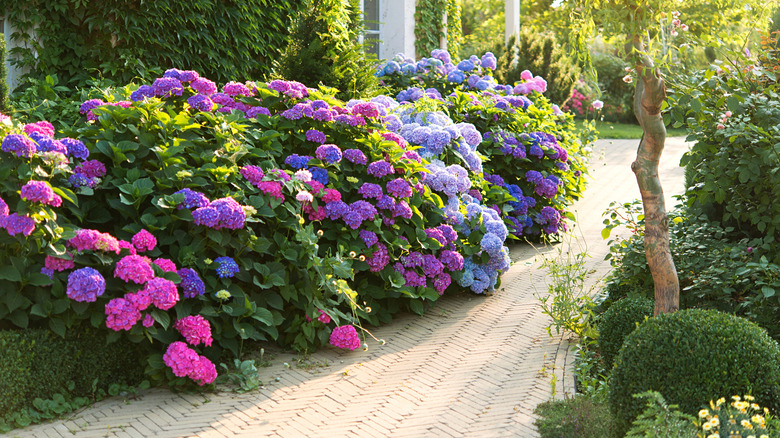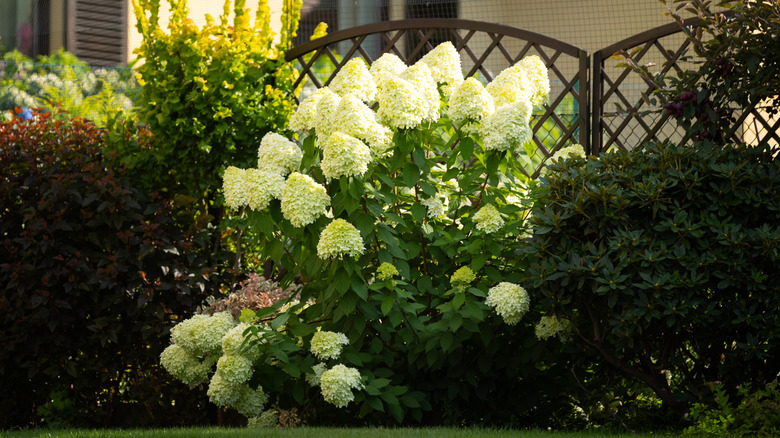The Varieties Of Hydrangeas That You Should Avoid Planting Together
Hydrangeaceae, also known as hydrangeas, are popular in American gardens. That's likely due to how little maintenance is required to grow these majestic multi-colored flowers, popping with shades of violet, pink, alabaster, and hues of blue in bloom. Of the 25 different species of hydrangeas, most do well under partial sun, and have a hardiness that allows them to endure in various soil types found in USDA climate zones 4 to 9 — that's the majority of the U.S., with the exception of the northernmost regions.
However, like people, there are certain plants that should never be grown next to each other because they simply won't get along. While there are a few plants that compete with hydrangeas for sunlight, water, and nutrients — daffodils for instance, are even toxic to hydrangeas — it might surprise you to learn that some species of hydrangeas don't grow well together either. With so many different variations on the species, an awareness of the issues that could arise by planting the wrong hydrangeas together is important.
Limelight hydrangea don't always play nicely with other hydrangeas
Unless you want some of your blooms to suffer, Hydrangea paniculata, otherwise known as limelight hydrangea, shouldn't be grown next to other types of hydrangeas. The problem here revolves around the fact that not all hydrangeas are great pollinating plants. Hydrangeas can be broken down into two groups where that's concerned, specifically pollinator-friendly hydrangeas called fertile florets, and less pollinator-friendly, but color-wise, more eye-catching, hydrangeas called sterile florets. Because of this, too many hydrangeas planted closely together can lead to issues with cross-pollination.
An additional concern is the impact on the color of your hydrangea flowers. Hydrangea flowers and their colors are heavily affected by the nutrients found in the soil, mainly aluminum. Aluminum bonds to soil particles in alkaline soils and is easily processed by hydrangea plants in acidic soils. However, too many different hydrangeas planted closely together can create a competition for nutrients and water in the soil, which can lead to poor quality blooms. These concerns are also a reason to do a little research on other plants you don't want to grow too close to hydrangeas, as the same sort of issues can occur.

